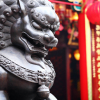Insights
Navigating Japan Equities: Monthly Insights from Tokyo (February 2022)
We analyse the course the Bank of Japan could take as other major central banks move towards policy change; we also take a deeper look into Japan’s strong exports, which are expected to keep buoying the economy in 2022.
Have you ever stopped to imagine what would happen if the world’s central banks spent just over a decade pouring USD 25 trillion of liquidity into the economy with more than 60% of that liquidity created in the last two years? In this article, we’ll try to assess what has happened and think about how investors should navigate the next phase of the greatest financial experiment of all time.
Balancing Act-Monthly insights: Multi-Asset Team-February 2022
The outlook is currently challenging. Tightening is coming, but it is not here yet and in the meantime current policy remains quite accommodative. There is no doubt that extremely easy policy boosted equity prices, which were reinforced by strong earnings. Still, we believe organic growth can continue.
Harvesting Growth, Harnessing Change - Monthly Insights: Asian Equity-January 2022
Asian stocks had a tough start to 2022 amid concerns that persistent inflation could cause any tightening by the US Federal Reserve (Fed) to be more aggressive than expected. For the month, the MSCI AC Asia ex Japan Index fell by 3.10% in US dollar (USD) terms.
US Federal Reserve: Approaching lift-off
Increasing expectations of a more aggressive Fed tightening cycle have led to a sell-off in US Treasuries. We share our thoughts on what this means for investors in 2022 and discuss our outlook for Asian bond markets.
Differentiation through engagement: Opportunities in Japan equities
We highlight the increasing importance of engagement in Japan, explain how it could be the key to unlocking the long-underperforming Japanese market’s potential, and assess how it can lead to the generation of alpha.
India: Reaping growth from change
Going back to India for a month after two long years of not being able to visit my family, I was pleasantly surprised by the new normal. While there has been much adversity, COVID-19 has also sparked positive change, especially on technology adoption.
Thoughts for seasick investors
It would not be surprising if the major swings in the markets and macroeconomic conditions, including historic central bank shifts, have made most investors somewhat seasick. Recently on a day-to-day basis, markets seem to react quite irrationally, but the overall backdrop is fairly clear: the markets are getting accustomed to one of the most rapid and major shifts in Federal Reserve policy ever in its history.
Global Equity Quarterly (Q4 2021)
An ability to look forward to better times and remain optimistic is invaluable. These attributes are no less helpful when investing in equities. Whilst you can get an unpleasant surprise from misjudging the direction of the tide while enjoying your picnic, the consequences for misjudging the direction of the liquidity waves look more pronounced than ever as we enter 2022.
Balancing Act-Monthly insights: Multi-Asset Team-January 2022
As is often the case, markets are a better reflection of general sentiment than news headlines and so far, it points to an ongoing global recovery as equities hold their gains of 2021 and long-term bond yields rise. It may not be time yet to write off more difficult scenarios derived from the outbreak of Omicron, but facts so far do speak more positively than just one month ago.
On the Ground in Asia-Monthly Insights: Asian Fixed Income-December 2021
On the back of uncertainties surrounding Omicron and major central banks turning hawkish, we deem it prudent to hold a slightly cautious stance on duration, as well as a slightly defensive stance on Asian currencies.
Harvesting Growth, Harnessing Change - Monthly Insights: Asian Equity-December 2021
Taiwan and South Korea were buoyed by strong exports as sustained global demand for electronics supported hardware tech stocks amid widespread supply chain disruptions. The ASEAN region saw mixed returns. Thailand was the best performer as policymakers approved new stimulus measures to support domestic consumption, while the Philippines had to delay COVID-19 vaccinations on the back of Typhoon Rai.
Navigating Japan Equities: Monthly Insights from Tokyo (January 2022)
We expect Japanese equities to rise significantly in 2022, supported by factors such as the government’s fiscal and coronavirus policies, the reshuffling of the Tokyo Stock Exchange (TSE) and robust exports.
2022 Global Multi Asset Outlook: Gauging long-term growth prospects
We maintain a constructive view of risk assets but are cognizant that the path toward realising gains will be more delicate as we traverse the course of the Fed and other central banks removing their easy policies.
2022 Asian Equity Outlook: Well positioned to navigate tightening
We believe that Asian economies are well positioned to navigate monetary tightening in the US. Government finances are healthier, as are corporate balance sheets. Most Asian economies are digitising faster than their western peers, while consumption is set to receive a meaningful boost from economic reopening.
Global Investment Committee's 2022 Outlook: Positive for risk assets
According to our Global Investment Committee, which concentrates on the intermediate term-view regarding developed markets for pension funds and other long-term investors, 2022 looks to be a challenging, but positive year for risk assets. We believe that the G-3 central banks will become more hawkish, and such pivots can often cause potholes and at the very least headwinds, but we trust that policymakers can traverse their new course successfully overall.
2022 New Zealand Fixed Income Outlook: Boxing on into 2022
For a nation that prides itself on punching above its weight in all we do, 2021 has seen New Zealand bobbing and weaving against the ropes somewhat, as we’ve fought the economic impact of an enduring COVID-19 pandemic. We may have been down in some places, but we’re certainly not out as we approach 2022.
2022 Global Equity Outlook: Disruption sharpens the focus on Future Quality
The initial discovery of the Omicron variant was met with fairly sensational reporting by some of the world’s media and this fed through quickly into investor sentiment. It is probably true, however, that even if Omicron had not surfaced it was probably about time that investors were again reminded of the volatility that resides in markets, despite the mollifying impact of endless liquidity injections by central banks.
2022 Japan Equity Outlook: ESG to bring Japan to the fore
ESG initiatives are expected to become ever more important for companies and investors around the world in 2022. We expect many Japanese companies to come to the fore amid this global shift towards ESG, with enhancements in ESG disclosures shedding light on their value creation opportunities amid the current drive towards decarbonisation.
2022 Singapore Equity Outlook: Focusing on sustainable growth
The Singapore economy is on a road to recovery. Although the economy has already rebounded sharply in 2021, we expect the recovery theme to remain intact and continue supporting the Singapore economy in 2022. We see a broadening of growth within Singapore’s key economic engines in 2022, with a sharper recovery expected in the services sector as the economy reopens.
2022 China Equity Outlook: Focusing on new market leaders
Amid a flurry of headlines, investors may have largely overlooked the significant number of recent positive developments in China, such as initiatives directed towards ambitious renewables targets, the continued opening up of the financial sectors and support for a significant number of industries including AI and big data. We believe these areas could become the new leaders of China’s capital markets, representing investment themes for the next several decades.
2022 Asian Fixed Income and FX Outlook: Regional recovery expected
The economic recovery in Asia ex-China is likely to improve significantly in 2022 as regulations are eased, borders are reopened and vaccination rates increase. We anticipate these developments to boost private sector confidence, providing an important tailwind for Asian ex-China growth in 2022.
Harvesting Growth, Harnessing Change - Monthly Insights: Asian Equity-November 2021
Asian stocks fell in November on concerns that the spread of the new Omicron COVID-19 variant could derail global reopening plans and delay economic recoveries.
2022 Global Fixed Income Outlook
We present our 2022 outlook for core markets, emerging markets and global credit.
2022 Asian Credit Outlook: Growth momentum seen reviving
The macro backdrop and robust corporate credit fundamentals remain supportive of Asia credit spreads. As such, we expect growth momentum of many Asian economies to gather pace heading into 2022. Overall corporate credit fundamentals are expected to remain robust, with earnings growth staying strong—albeit at a slightly slower pace compared to 2021.
Global Investment Committee’s 2022 Outlook: Continue risk-positive, especially for Japan
The global economy should match the consensus for strong growth, thanks to vaccinations, continued fiscal stimulus, acceptable global geopolitical conditions, and continued low interest rates despite increasingly hawkish central banks. Such, via increased corporate profits, should allow equity markets to perform very well ahead, with impressive returns in each region, particularly in Japan.
Japan’s “Show Me the Money” Corporate Governance: 3Q Record High
The just released 3Q CY21 data on aggregate corporate profits in Japan was very positive, as although for the single quarter, the overall corporate recurring pre-tax profit margin declined from the 2Q, as it does routinely for this non-seasonally adjusted data.
Future Quality Insights - December 2021 - A trip to Lisbon
Just a few weeks ago I attended my first in-person conference since 2019. Over 40,000 people descended upon Lisbon for Web Summit, one of the world’s largest technology conferences. The event brings together CEO’s and founders of established firms together with start-ups and policymakers to discuss and pitch ideas over the course of a week.
Why Japan’s CPI remains low when other economies grapple with inflation
As the global economy takes steps to recover from the pandemic, prices have steadily risen around the world. Japan, however, remains an exception among the major economies. The country’s headline CPI did tick up in October, but at a very modest pace, showing that inflation is yet to gain strong traction in a country long stuck in deflation.
China: Regulate in order to innovate
Every few years, concerns emerge over whether China is investable. We are currently witnessing the latest round of this cycle amid China’s drive to regulate. However, investing in China during such moments of doubt has reaped substantial returns in the past. The key is not missing the forest for the trees when China is regulating in order to innovate.
Asian stocks rose in October, with investors remaining focused on rising inflationary pressures and the US Federal Reserve’s tapering plans. The markets’ key concern is China’s economic performance and its impact on the energy and commodity complexes.
On the ground in Asia: Monthly insights from the Asian Fixed Income Team-October 2021
We expect Indonesian bonds to outperform, as demand is supported by positive supply technicals. Meanwhile, we see bonds of low-yielding countries like Singapore, South Korea and Thailand prone to bear flattening, driven mainly by UST movement.
Japan Value Insights: Medical technology key to value and addressing inefficiencies
Japan’s rapidly advancing medical technology is viewed as a way to address the healthcare sector’s inefficiencies while at the same time offering potential value opportunities.
Japan Equity Monthly – October 2021
We explain how the recent lower house election win gives Japan’s new prime minister a free hand to pursue policies aimed to help the economy recover from COVID-19. We also analyse why a weaker yen no longer provides as much of a boost to equities.
Global Equity Quarterly Q3 2021
Our philosophy is centred on the search for “Future Quality” in a company. Future Quality companies are those that we believe will attain and sustain high returns on investment. ESG considerations are integral to Future Quality investing as good companies make for good investment.
Asian Fixed Income Monthly - September 2021
US Treasury (UST) yields rose in September, with the US Federal Open Market Committee finally alluding to moderate its asset purchases as soon as November. The rise in rates was further supported by an escalating power crunch across Europe and China amid surging energy prices prompting concerns about inflation.
Multi-asset Monthly - October 2021
Volatility has arisen as we expected it eventually would, and September is often an apt month to rediscover risk given market participants’ return from summer vacations noting that record high equity markets do not quite square with a number of significant risk events on the near-term horizon.
Asian Equity Monthly - September 2021
Asian stocks fell in September, with concerns about China’s growth outlook and the US Federal Reserve (Fed)’s taper plan being the key drivers of sentiment. For the month, the MSCI AC Asia ex Japan Index declined by 4.2% in US dollar (USD) terms.
Japan Equity Monthly - September 2021
We provide an update of Japan’s political calendar as the new Prime Minister Kishida leads the ruling party into a 31 October general election, which could have a significant market impact. We also discuss what the recent China-related volatility could mean for the Japanese market.
Global Investment Committee’s 12-month Outlook: Continue risk-positive, especially for Japan
Out of the six scenarios presented, a narrow majority of our committee agreed again on a positive scenario in which the global economy matches the market consensus for solid growth, while equities continue to rally.
Latin America: Supplier to a commodity-hungry world
Inflation is on everyone’s mind. From central bankers to bakers, it is one of the biggest topics of discussion. The prices of many commodities are rising sharply. The reasons vary. Supply constraints, sharp rise in demand or bad weather—take your pick.
Multi-asset Monthly - September 2021
As we contemplate a post-pandemic world, it is becoming more likely that things will not return to “normal” as we once knew it. While vaccines have been highly successful in preventing serious illness in those who are still contracting the virus, the Delta variant of COVID-19 is also proving to be harder to contain.
Asian Fixed Income Monthly - August 2021
US Treasury (UST) yields rose in August, prompted by data showing stronger-than-expected US employment growth. The rise in rates was supported by hawkish comments from some US Federal Reserve (Fed) officials.
Staying adaptive to an evolving recovery
The world is settling into a new normal that is likely to look quite different from pre-COVID-19 norms. This includes different patterns of demand shaped by learning to live with the virus and an ongoing fiscal thrust with firm policy objectives.
Asian Equity Monthly - August 2021
Asian stocks gained in August. While concerns about the spread of the Delta variant weighed on markets at the beginning of the month, the US Federal Reserve (Fed)’s dovish commentary and a rebound in the battered Chinese technology (tech) sector lifted sentiment towards the month-end
Japan Equity Monthly - August 2021
The news of Prime Minister Suga’s impending resignation triggered a rally in Japanese equities this week, with the market hoping that a new administration will bring the COVID-19 outbreak under control and hasten the normalisation of the economy. We explain what the market expects from the new administration and assess the implications of Japan’s upcoming general election.
Japan Value Insights
Japan’s drive to embrace hydrogen as an alternative energy source is an opportunity to identify hidden value in firms that are willing to tackle and resolve social issues.
Japan’s “Show Me the Money” Corporate Governance: 2Q Positive Profit Surprise
The just released 2Q CY21 data on aggregate corporate profits in Japan was surprisingly positive, as the overall corporate recurring pre-tax profit margin surged relatively near its record high in the 3Q CY18.
Japan’s structural reform to benefit investors
The three Japan-related news topics that have overwhelmingly dominated the attention of Western media so far this year are COVID-19 (by far), the Tokyo Olympics and the showdown at Toshiba.
Future Quality Insights - August 2021
The Tokyo summer Olympics have been a welcome distraction over the last few weeks and well done to Japan for hosting the games so successfully in the current environment. In particular it is inspiring to see the years of preparation and planning being showcased by the top competitors in their respective sports.




















































